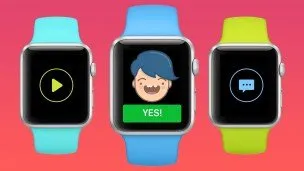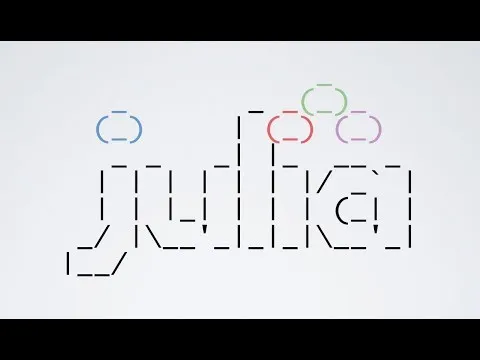
Intro to Julia tutorial (version 10) 
This tutorial provides an overview of the Julia programming language, version 1.0, for beginners. It covers topics such as data types, control flow, and functions, and is authored by Herriman & Verweij. ▼
ADVERTISEMENT
Course Feature
![]() Cost:
Cost:
Free
![]() Provider:
Provider:
Youtube
![]() Certificate:
Certificate:
No Information
![]() Language:
Language:
English
![]() Start Date:
Start Date:
Self Paced
Course Overview
❗The content presented here is sourced directly from Youtube platform. For comprehensive course details, including enrollment information, simply click on the 'Go to class' link on our website.
Updated in [March 06th, 2023]
Unlock the Exciting World of Learning! Here's What Awaits You: With the Intro to Julia tutorial (version 10), learners can explore the fundamentals of the Julia programming language. This course covers the basics of the language, including data types, control flow, functions, and more. Learners will also learn how to use the Julia package manager to install and manage packages, as well as how to use the REPL (read-eval-print loop) to interact with the language. Additionally, learners will gain an understanding of the Julia language's syntax and semantics, as well as how to debug and optimize code. Finally, learners will be able to apply their knowledge to create their own programs and applications. With this course, learners can unlock the exciting world of programming with Julia and take their skills to the next level.
[Applications]
The Intro to Julia tutorial (version 10) provides a comprehensive introduction to the Julia programming language. After completing this course, users can apply their knowledge to a variety of tasks, such as data analysis, machine learning, and web development. They can also use Julia to create their own packages and libraries. Additionally, users can use Julia to develop applications for mobile and desktop platforms. Finally, users can use Julia to develop interactive web applications and websites.
[Career Paths]
1. Data Scientist: Data Scientists use Julia to analyze large datasets and uncover insights. They use Julia to develop predictive models, build machine learning algorithms, and create visualizations. Data Scientists are in high demand as businesses increasingly rely on data-driven decisions.
2. Software Engineer: Software Engineers use Julia to develop applications and software solutions. They use Julia to create web applications, mobile applications, and desktop applications. Software Engineers are in high demand as businesses increasingly rely on technology to improve their operations.
3. Machine Learning Engineer: Machine Learning Engineers use Julia to develop machine learning algorithms and models. They use Julia to create predictive models, build neural networks, and develop natural language processing systems. Machine Learning Engineers are in high demand as businesses increasingly rely on artificial intelligence to automate processes.
4. Quantitative Analyst: Quantitative Analysts use Julia to develop quantitative models and analyze financial data. They use Julia to develop trading strategies, build risk models, and create financial simulations. Quantitative Analysts are in high demand as businesses increasingly rely on quantitative analysis to make informed decisions.
[Education Paths]
1. Bachelor's Degree in Computer Science: A Bachelor's Degree in Computer Science is a great way to gain a comprehensive understanding of the fundamentals of computer science, including programming languages such as Julia. This degree will provide students with the skills and knowledge necessary to develop software applications, analyze data, and create algorithms. Additionally, this degree will provide students with the opportunity to explore the latest trends in computer science, such as artificial intelligence, machine learning, and data science.
2. Master's Degree in Data Science: A Master's Degree in Data Science is a great way to gain a comprehensive understanding of the fundamentals of data science, including programming languages such as Julia. This degree will provide students with the skills and knowledge necessary to analyze data, create algorithms, and develop software applications. Additionally, this degree will provide students with the opportunity to explore the latest trends in data science, such as artificial intelligence, machine learning, and big data.
3. Master's Degree in Artificial Intelligence: A Master's Degree in Artificial Intelligence is a great way to gain a comprehensive understanding of the fundamentals of artificial intelligence, including programming languages such as Julia. This degree will provide students with the skills and knowledge necessary to develop software applications, analyze data, and create algorithms. Additionally, this degree will provide students with the opportunity to explore the latest trends in artificial intelligence, such as machine learning, natural language processing, and deep learning.
4. Doctoral Degree in Machine Learning: A Doctoral Degree in Machine Learning is a great way to gain a comprehensive understanding of the fundamentals of machine learning, including programming languages such as Julia. This degree will provide students with the skills and knowledge necessary to develop software applications, analyze data, and create algorithms. Additionally, this degree will provide students with the opportunity to explore the latest trends in machine learning, such as deep learning, reinforcement learning, and natural language processing.
Course Provider

Provider Youtube's Stats at AZClass
Discussion and Reviews
0.0 (Based on 0 reviews)
Explore Similar Online Courses

AngularJS Line of Business Applications

Apple Watch UX: Design Beautiful UI and User Experiences

Python for Informatics: Exploring Information

Social Network Analysis

Introduction to Systematic Review and Meta-Analysis

The Analytics Edge

DCO042 - Python For Informatics

Causal Diagrams: Draw Your Assumptions Before Your Conclusions

Whole genome sequencing of bacterial genomes - tools and applications

Intro to the Queryverse a Julia data science stack

Julia Scientific Programming

Julia: Getting Started
 Related Categories
Related Categories
 Popular Providers
Popular Providers
Quiz
 Submitted Sucessfully
Submitted Sucessfully
1. What is the version of the Intro to Julia tutorial?
2. Who are the authors of the Intro to Julia tutorial?
3. What type of tutorial is the Intro to Julia tutorial?
4. What is the latest version of Julia?


Start your review of Intro to Julia tutorial (version 10)